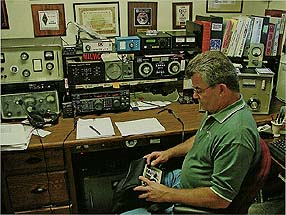Radio Frequency Interference
Location & Training
RFI is any unwanted signal, which prevents reception of the best possible signal from the source (Radio, TV station…) you want to receive.
What Is
Radio Frequency Interference (RFI)
RFI is any unwanted signal, which prevents reception of the best possible signal from the source (Radio, TV station…) you want to receive. RFI may prevent reception altogether, it may cause a temporary loss of the desired signal, or it may affect the quality of the sound or picture produced by your equipment. RFI to electronic equipment is a frustrating problem and many times an indication of a hazardous condition; fortunately there is a solution.
About Us
RFI Services
We Provide Electrical Interference Investigation and Training.
Also, annual workshops training utility personnel to locate and eliminate sources of interference.
As the evolution of RFI Services continues, We want to be your most valuable resource for solving radio electrical interference problems.
If you are interested in the subject of power line interference, RFI Services will be your most valuable resource.
Mike Martin owns and operates RFI Services, a firm dedicated exclusively to RFI Locating & Training. Mike has been locating interference sources and training all types of utility companies full-time for over 40 years and solves hundreds of complaints a year. He takes advantage of the opportunity to test all RFI locating equipment and makes recommendations to the manufacturers for improvements. He has received acknowledgments in many publications including AC Power Interference Handbook * AC Power Interference Manual * Power Line Interference, A Practical Handbook * Popular Mechanics * T&D Magazine * The American Radio Relay League Journal, and The ARRL RFI Book. Mike is multi-licensed by the FCC and considered the most experienced Interference Investigator in the country.

I’m utilizing the “Marv Loftness oscilloscope method” of viewing and recording a noise signature using a receiver designed for RFI Locating.
This is the first and most important step of the source locating process and may need to be repeated several times during an investigation.
This step is frequently excluded and that’s a very costly mistake.

I’m pinpointing the exact source of the noise on the structure with an ultrasonic locator.
I use ultra-sound as one of the final steps in the process.
It’s important to note that every step of the locating process is only as good as your success in the proceeding step. There’s no time for shortcuts.